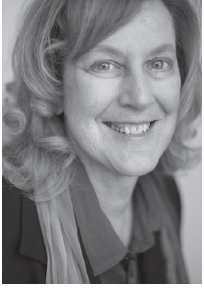Book Review by Ellen Roseman
 The Sleep-Easy Retirement Guide:
The Sleep-Easy Retirement Guide:
Answers To The 12 Biggest Financial Questions That Keep You Up At Night
(Milner & Associates Inc.) By David Aston
One day, most of us will stop earning employment income. That’s when we turn to pensions, government benefits and our own savings to support a standard of living we hope is close to what we had before.
Planning for retirement can be tricky for middle-income Canadians. There are many questions to consider – at least a dozen, according to a new guide that tries to simplify the process – and few answers that suit everyone.
“I know that many people are confused by conflicting advice that’s often repeated in the media and by the finance industry,” says author and personal finance journalist David Aston, who has a Chartered Financial Analyst (CFA) designation and is also a Chartered Professional Accountant (CPA).
In The Sleep-Easy Retirement Guide, based on a series of articles he wrote from 2008 to 2016 in MoneySense magazine, he takes the view that there’s no right answer to the key questions for everyone. Instead, he tries to help people find answers that work best for their own individual situation and preferences.
Aston, 62, says he’s trying to reach middle class Canadians, “which means you’re not poor and you’re not rich (at least at the point of preparing for retirement). In other words, you have financial means that are average or somewhat better than average, but you probably don’t have the luxury of planning for retirement from a starting point of true wealth.”
He focuses on the needs of Canadians who have to effectively manage their own investments, rather than those with good employer defined benefit pension plans. He targets readers who already know the basics of personal finance, but dislike generalized advice and pat answers.
In this $26.95 paperback, which clocks in at a concise 201 pages, Aston tries to tailor his advice on a range of general questions (one question per chapter). These include:
How big a nest egg will I need? How much do I need to save each year? How much should I plan to spend in retirement? How long do I need to work?
Aston also tries to give guidance to readers who face imminent retirement or who are already retired. This is where I think the book provides the most value. Questions include:
How much should I expect from government pensions and when should I start them? How much can I draw from my savings each year? How do I manage my investments in retirement to make my money last? How do I get the financial advice I need without paying too much?
His final chapters address other important questions, such as: How can I use the value in my home to help my retirement? How do I ensure I get good care later in life if I need it? How can I save my retirement if my finances get off track?
The answers can be complicated. Luckily, Aston provides a number of charts that show the various options side by side. The visuals include:
- How working three more years can dramatically bolster a modest retirement (page 42).
- The cost of retiring well: What couples spend. What singles spend (pages 64-65).
- Know your government pensions. Canada Pension Plan. Old Age Security (pages 72-73, plus an appendix on the basics of the guaranteed income supplement, page 200-201).
- How high is your payout rate? Annuities vs. steady withdrawals from a stock-and-bond portfolio (page 115).
- Comparing different types of investment advisors. Mutual fund advisor, broker, portfolio manager, robo-advisor (pages 126-127).
I think this is a useful addition to the small number of books to help average Canadians plan for a sustainable retirement income. My favourites are Retirement Income for Life by Fredrick Vettese; Your Retirement Income Blueprint (3rd edition) by Daryl Diamond; and Victory Lap Retirement (2nd edition) by Mike Drak, Rob Morrison and Jonathan Chevreau.
As a personal finance instructor, I will recommend this new book to my adult students, but with a caveat that it’s not for beginners. The paragraphs are long. The concepts can be technical, such as the four per cent sustainable withdrawal rate, which Aston says is often misunderstood and misapplied.
“It’s four per cent of the initial value of your financial assets when you retire at age 65, plus inflation adjustments, not four per cent of your nest egg at every point in time,” he writes.
“If your retirement portfolio is $500,000 and you retire at age 65, then it means you can draw four per cent or $20,000 in the first year of retirement. Then, if inflation is two per cent that year, you could withdraw $20,000 (again four per cent of the total amount of your savings at retirement) plus another two per cent for a total of $20,400 in the second year, and so on in future years, this maintaining purchasing power at a constant level.”
This book can also help those who have financial advisors. Aston gives you the right questions to ask an advisor and the answers that can help you judge the advisor’s replies.
One final point: The author is optimistic and never makes you think a comfortable retirement is beyond your grasp.
“It’s an exciting time to be a retiree,” he says. “Planning financially for the new retirement isn’t always easy. But for most middle-class Canadians, your ability to achieve an active and fulfilling retirement that is also affordable should be within reach. To a large extent, this great opportunity to enjoy the new retirement depends on what you make of it.”

